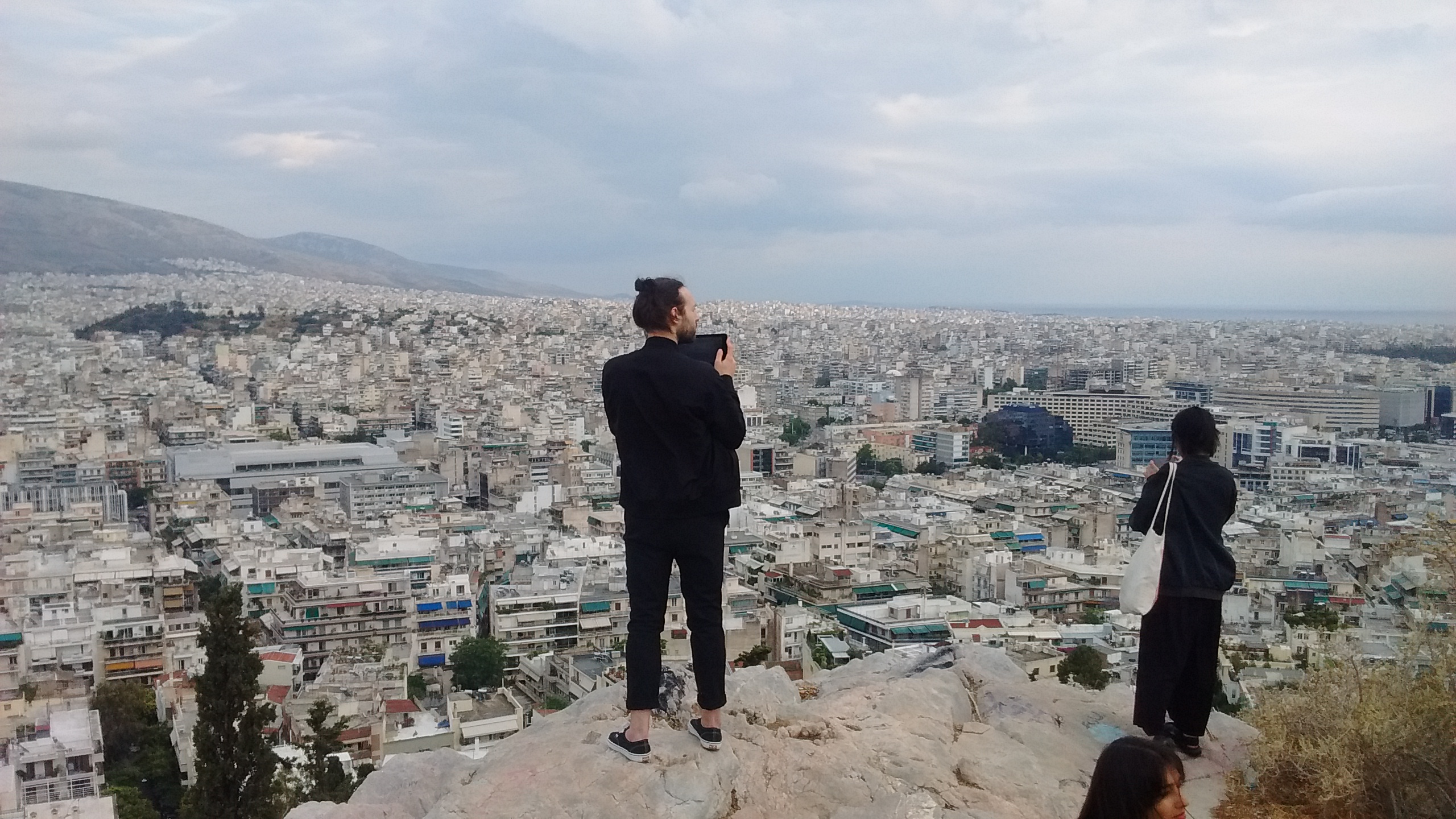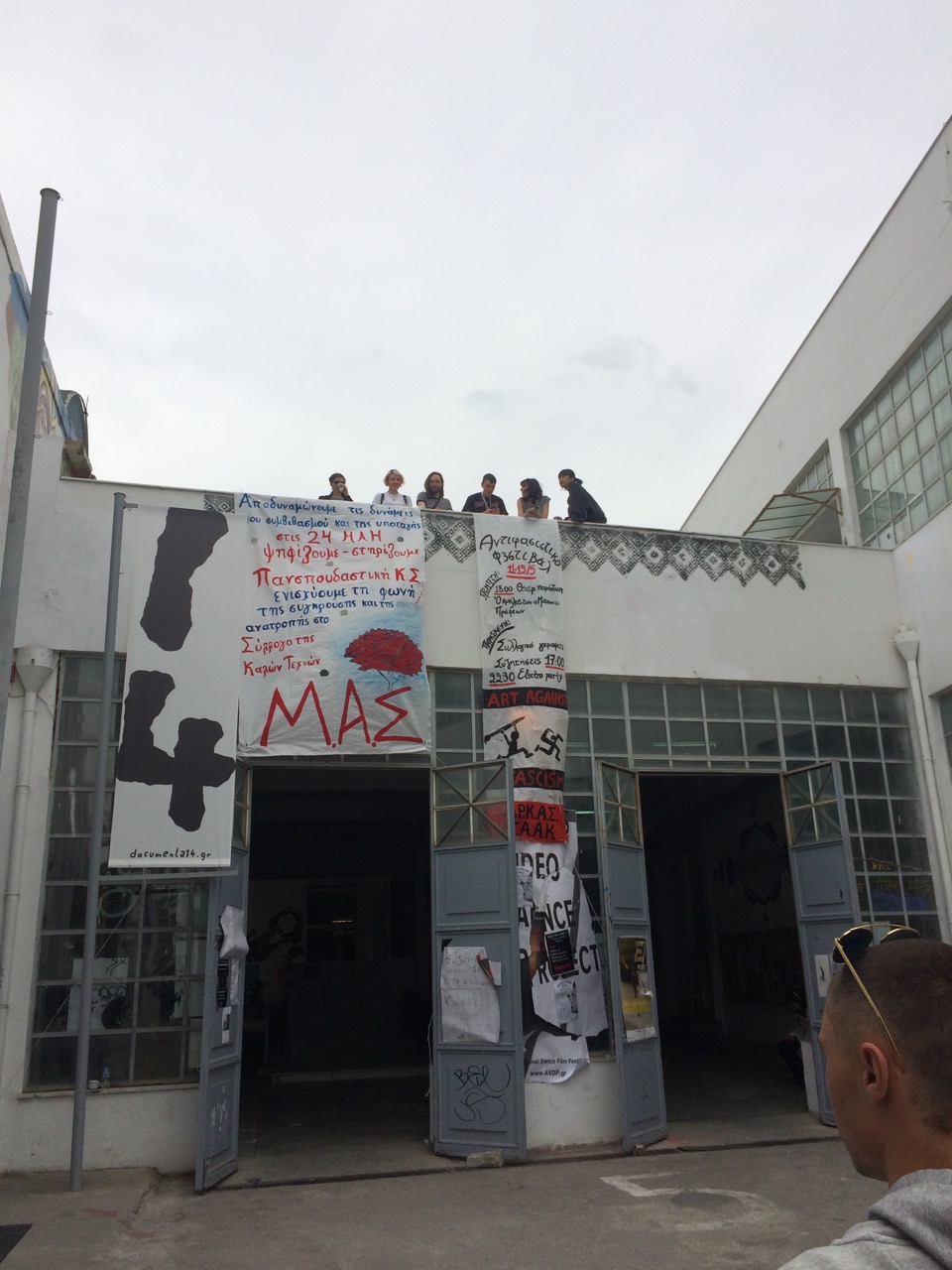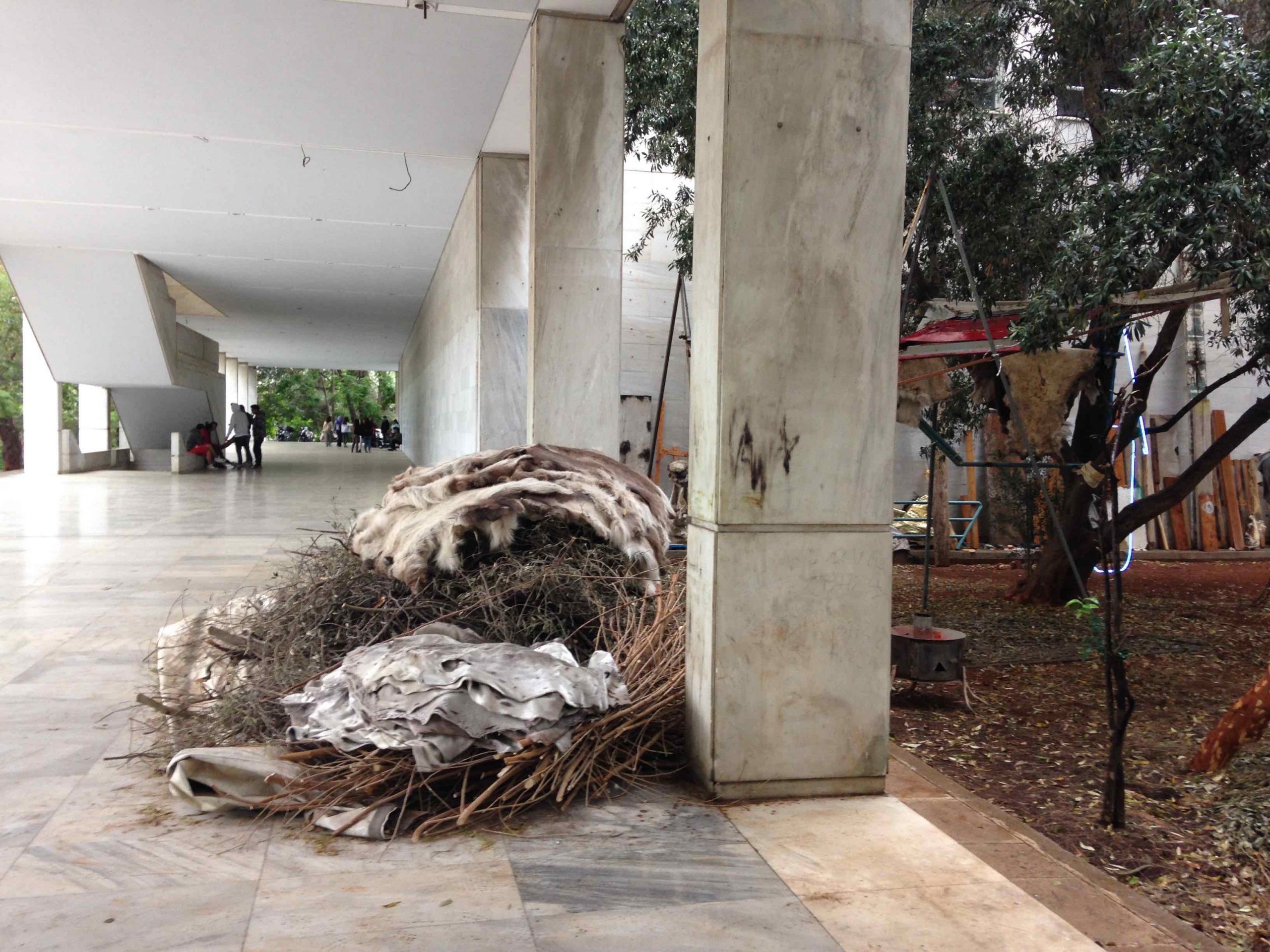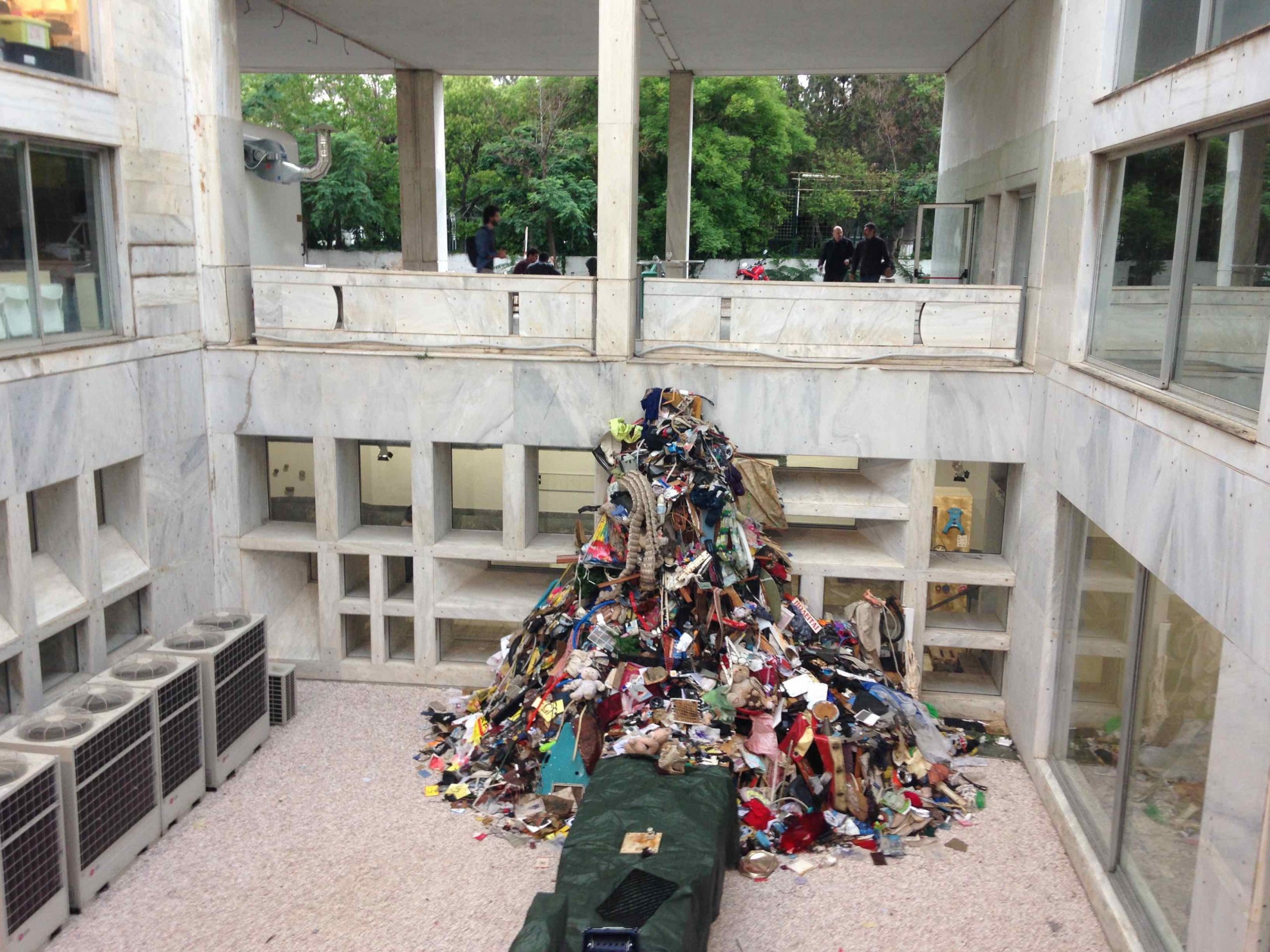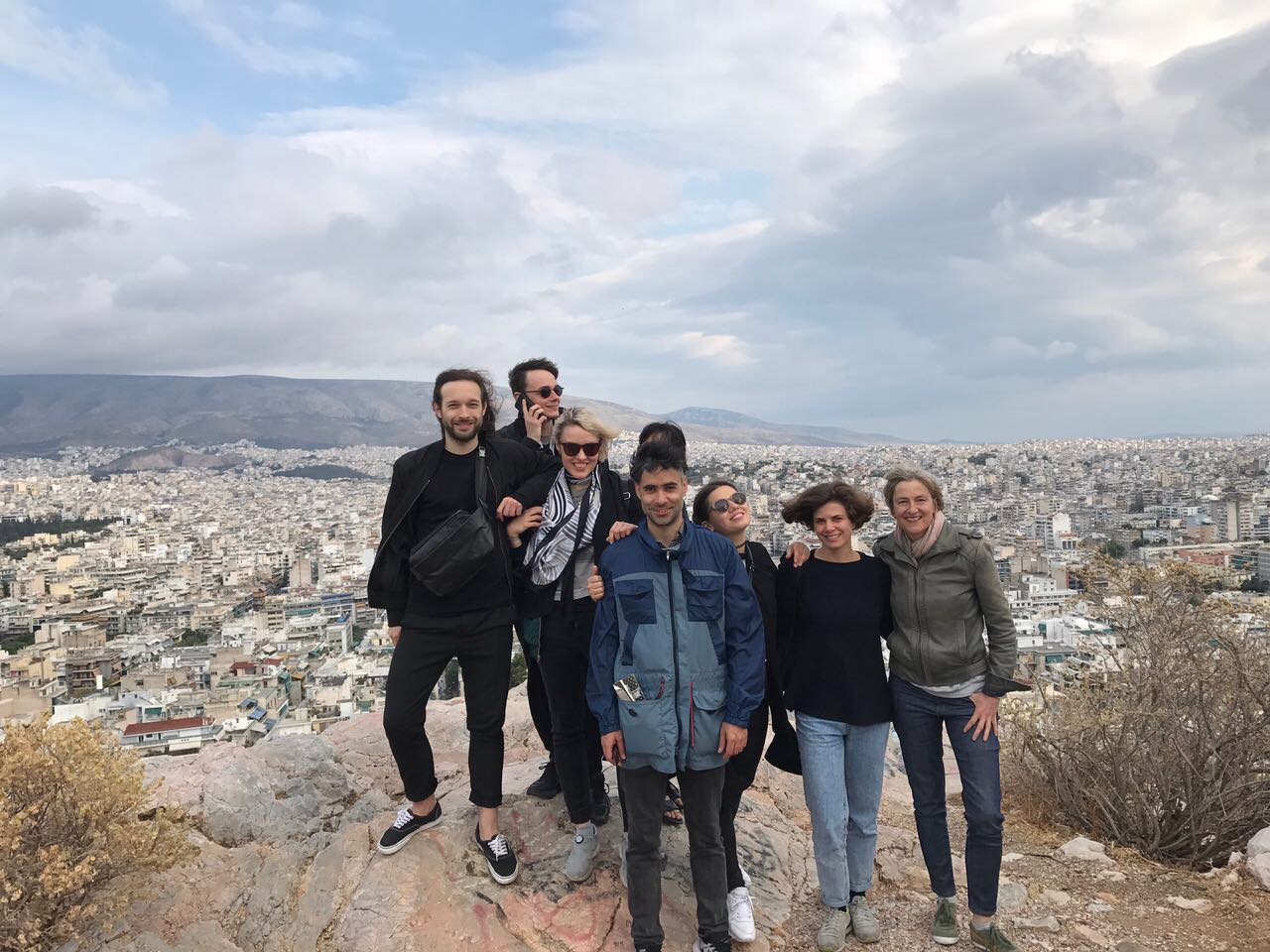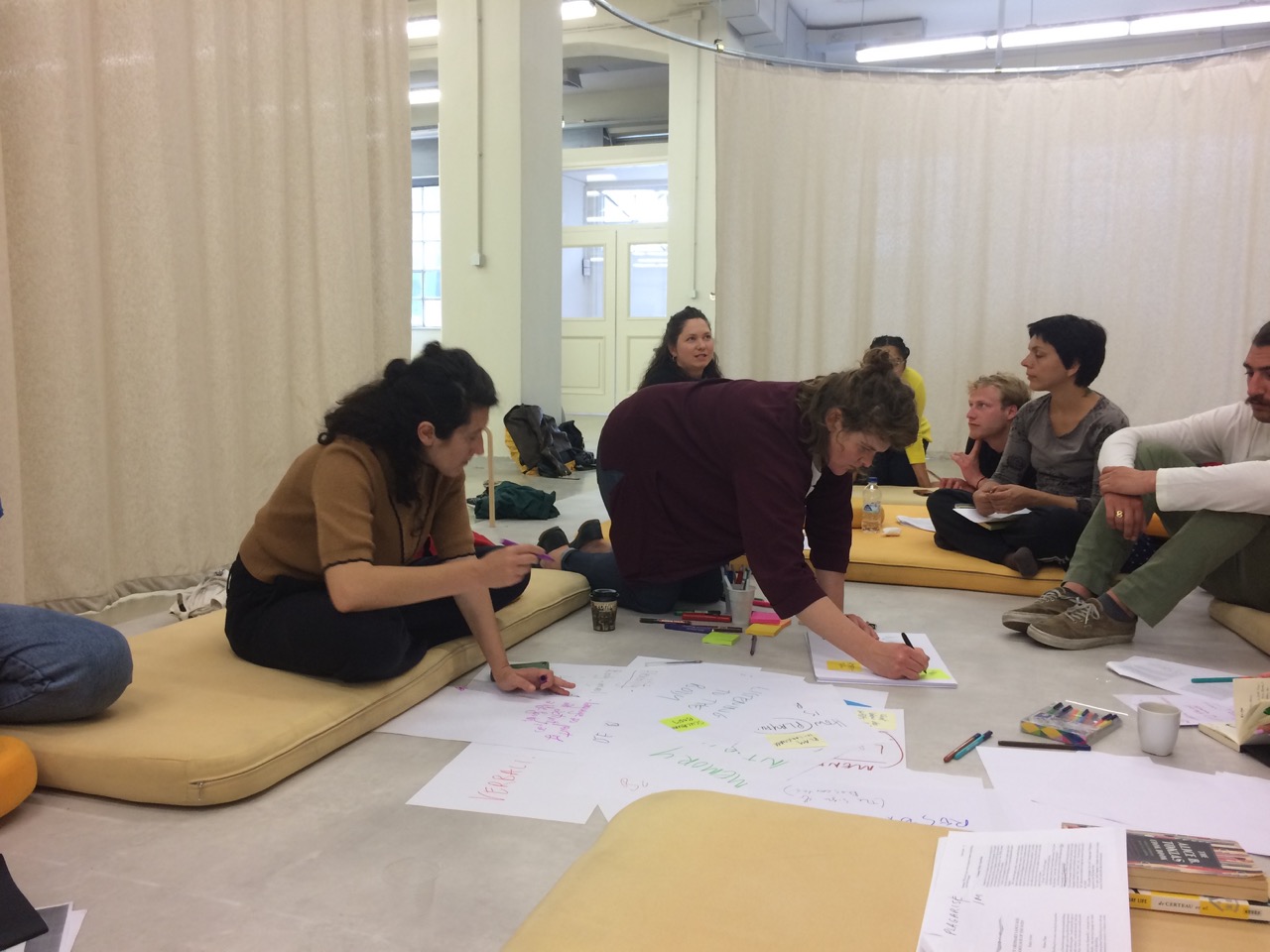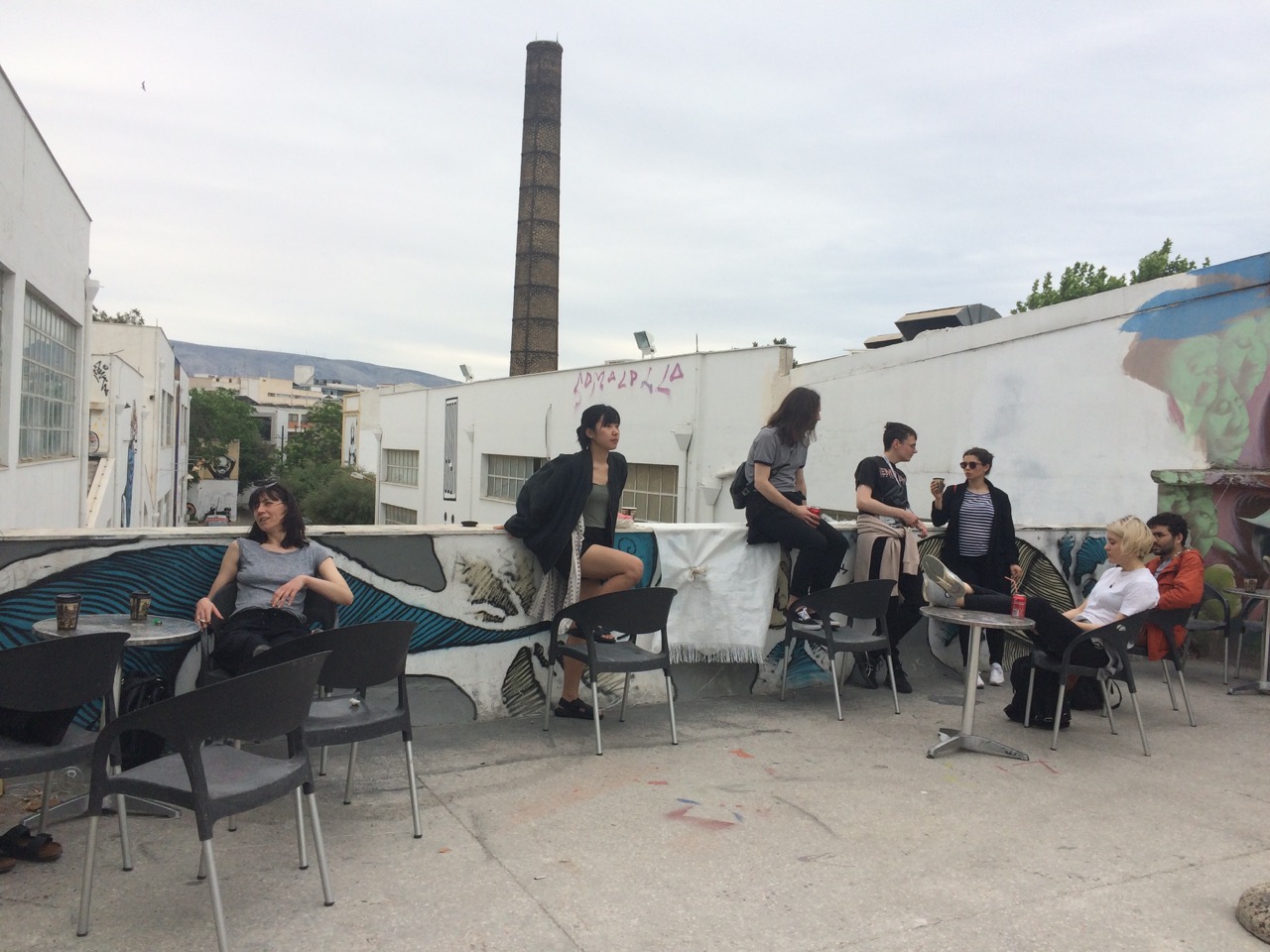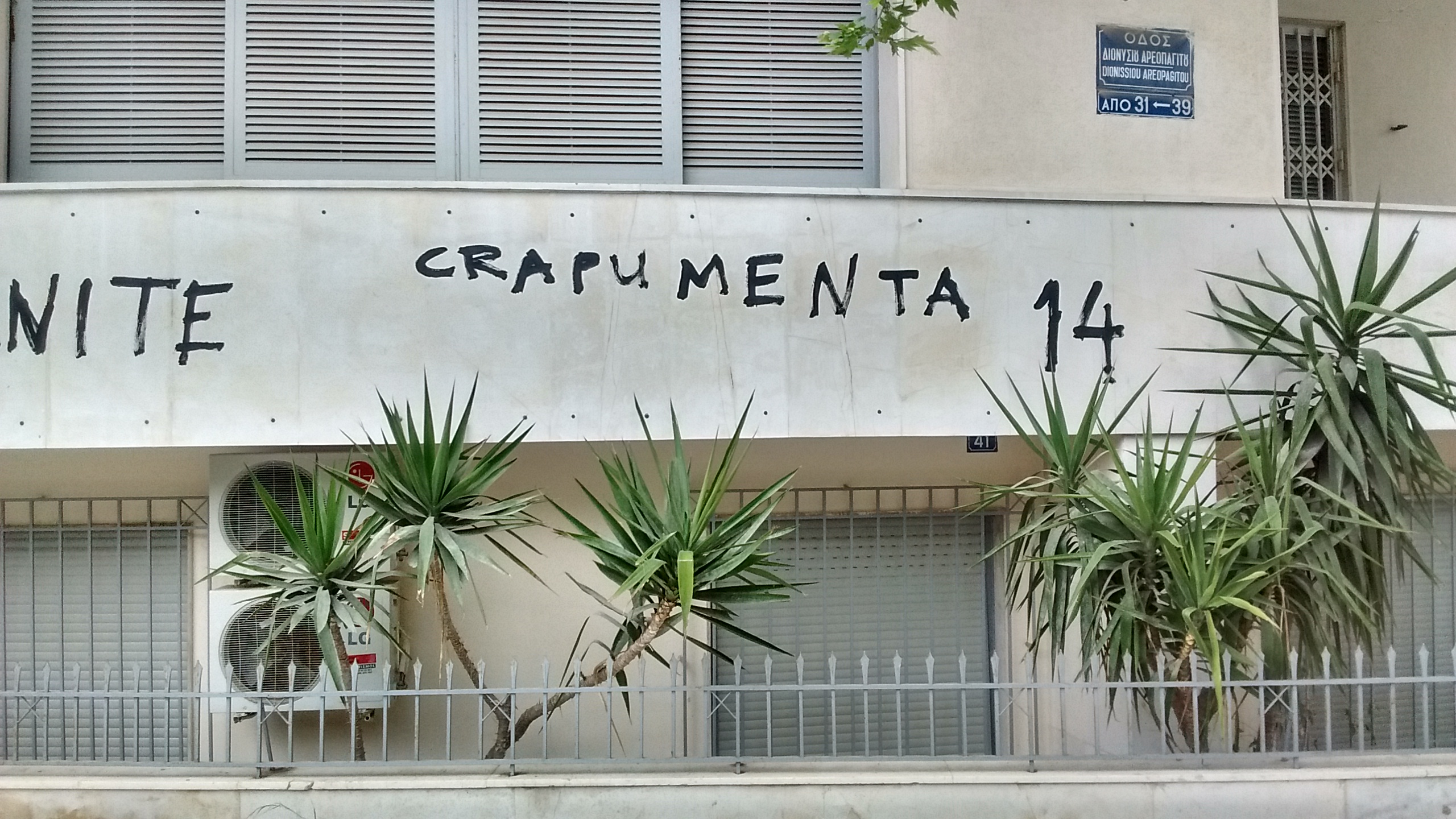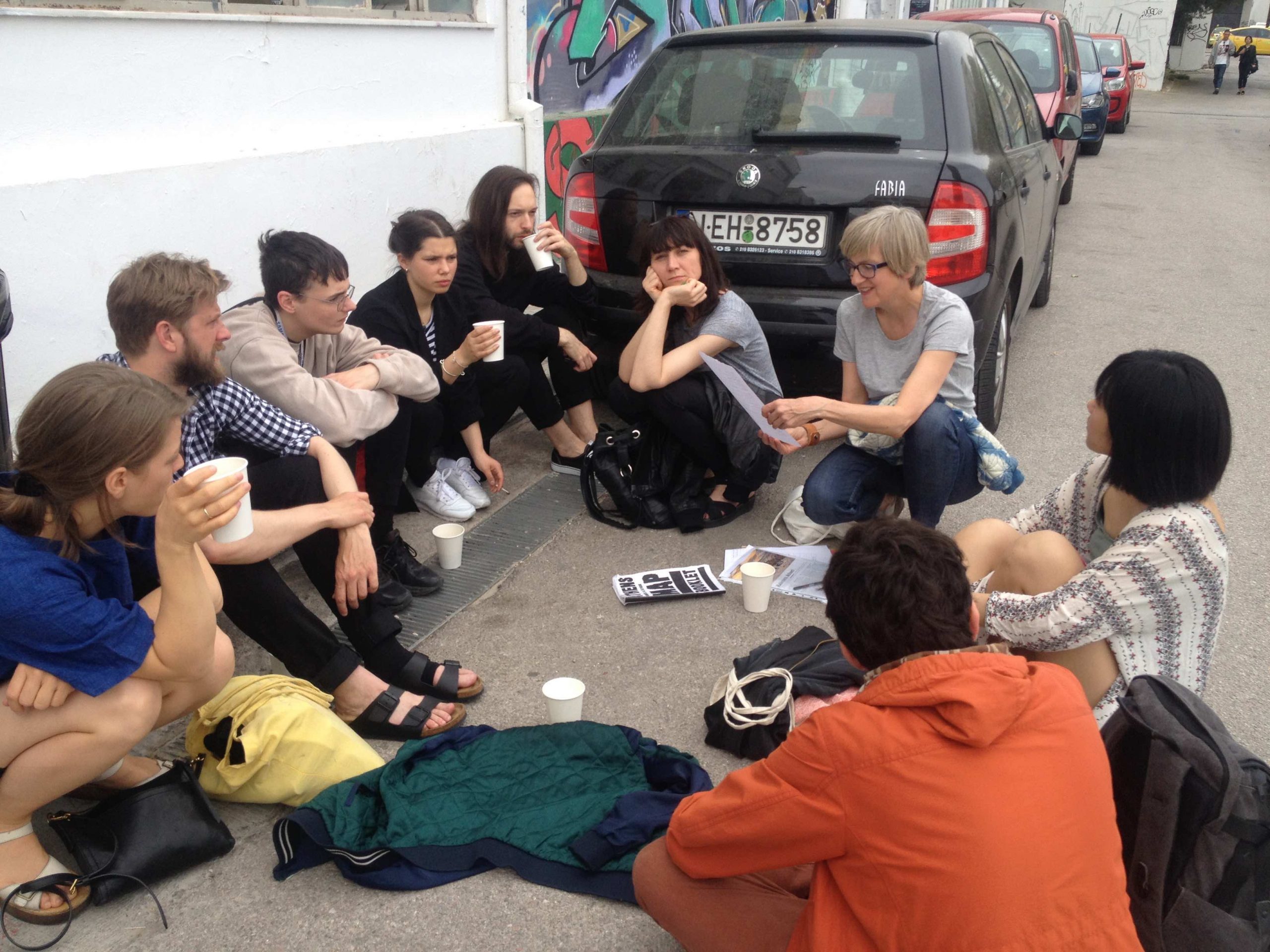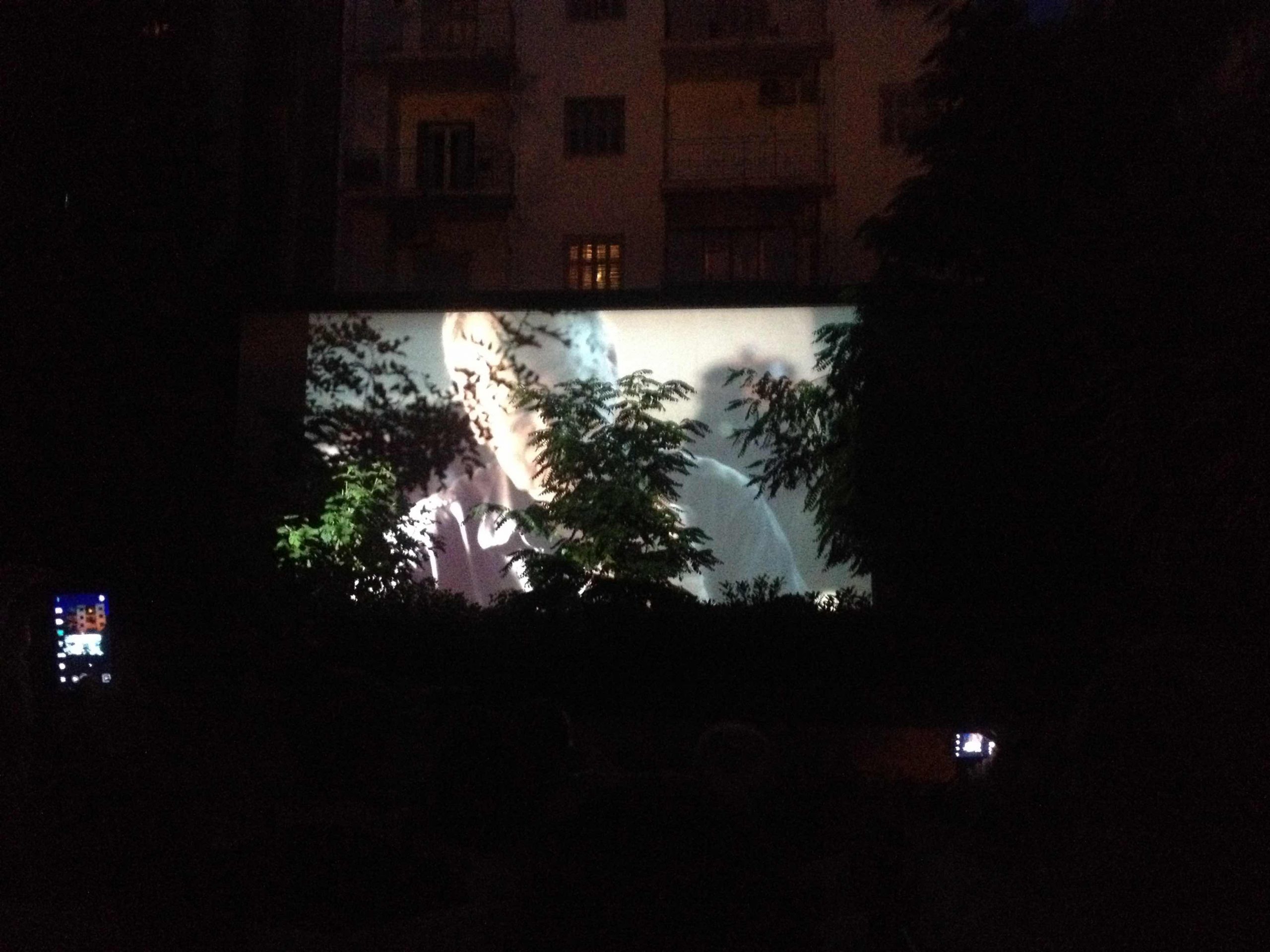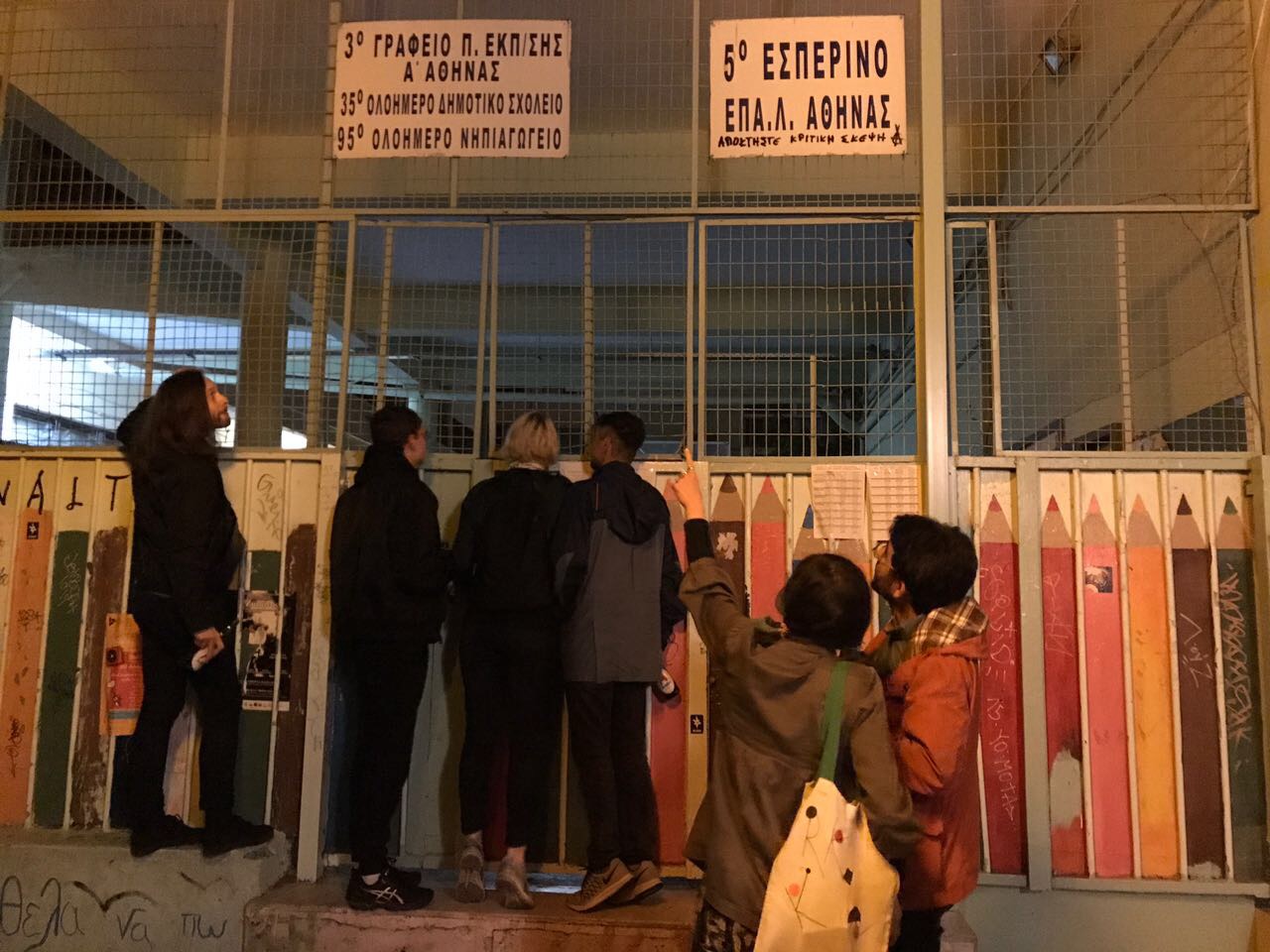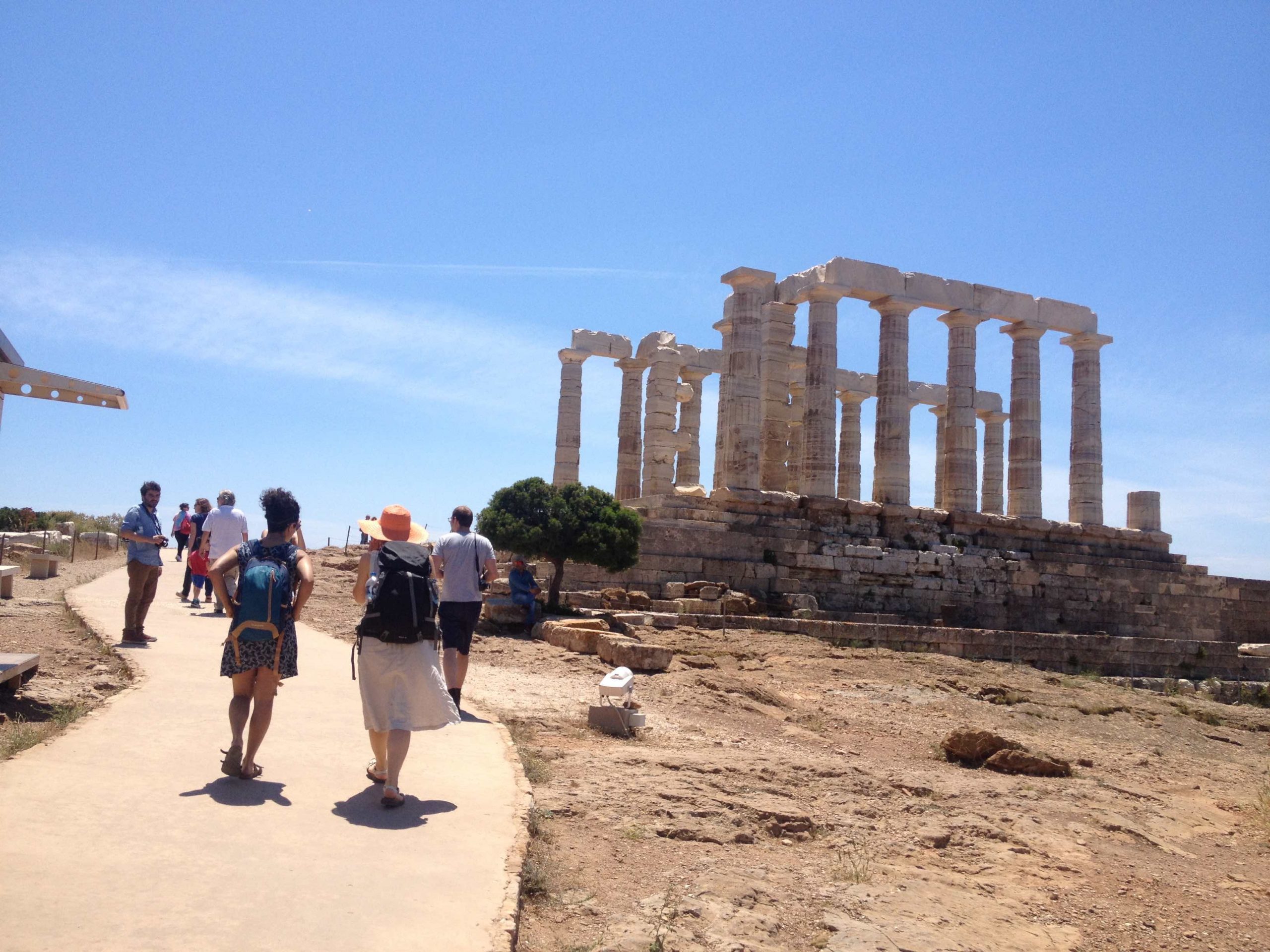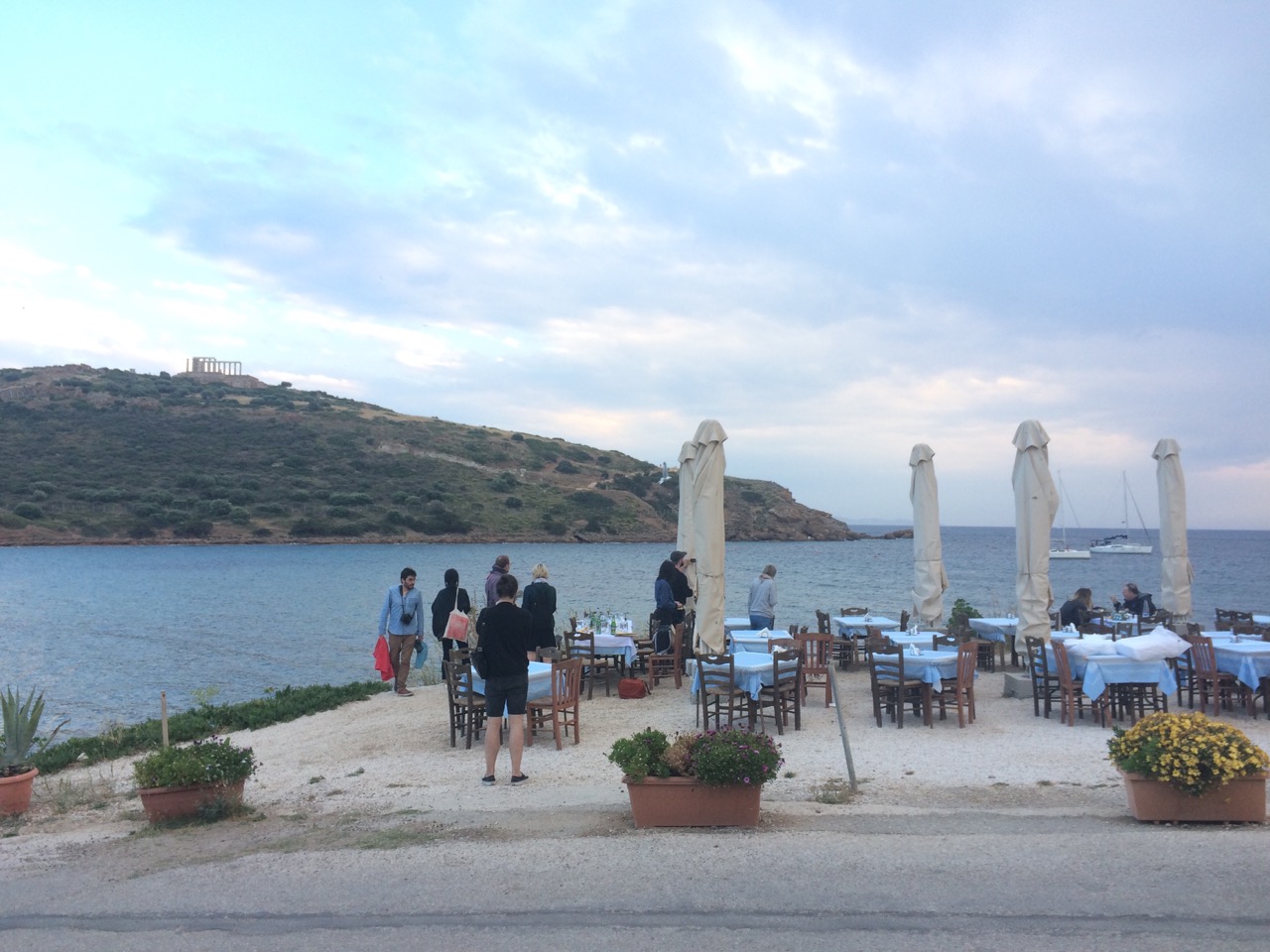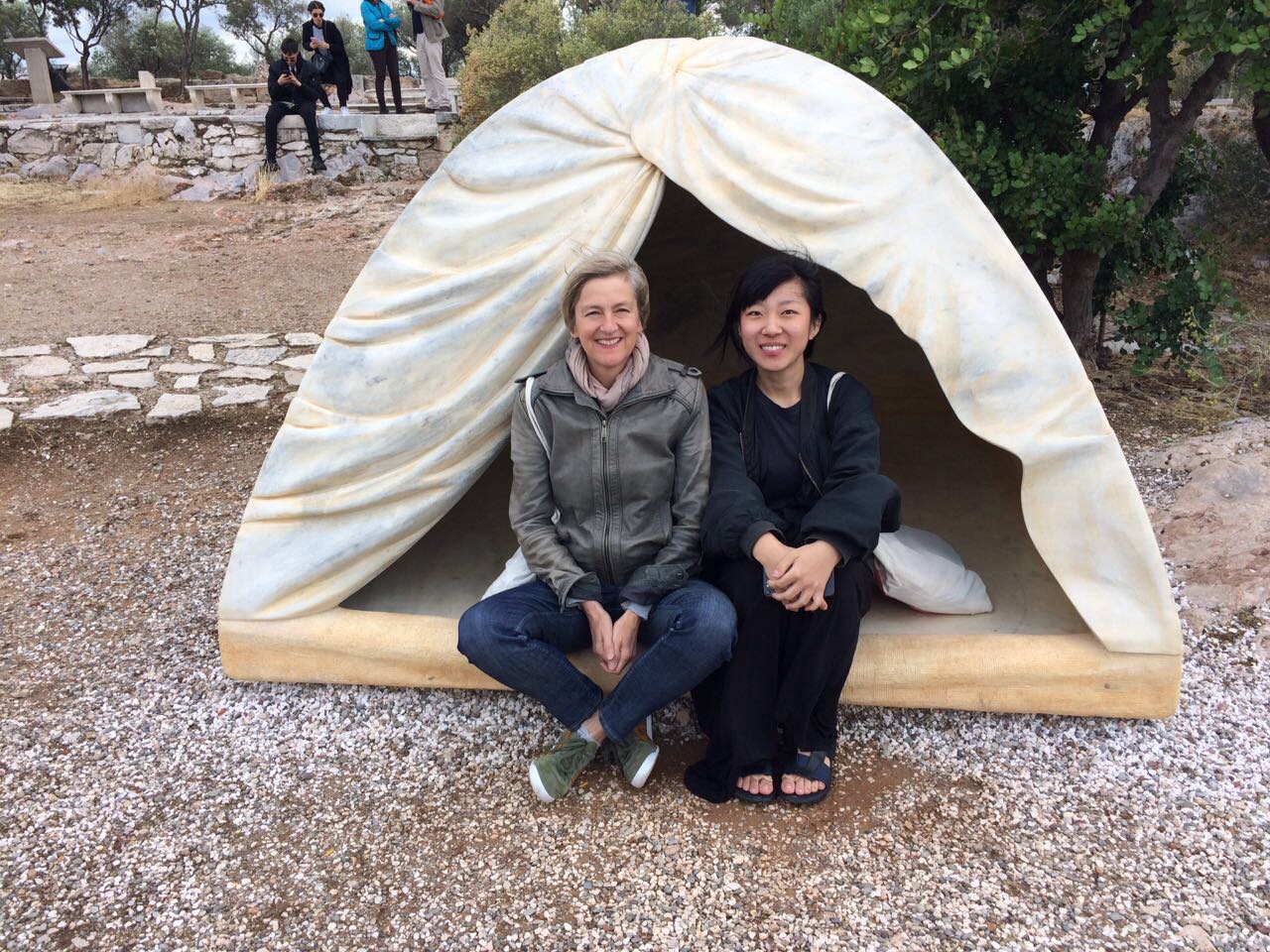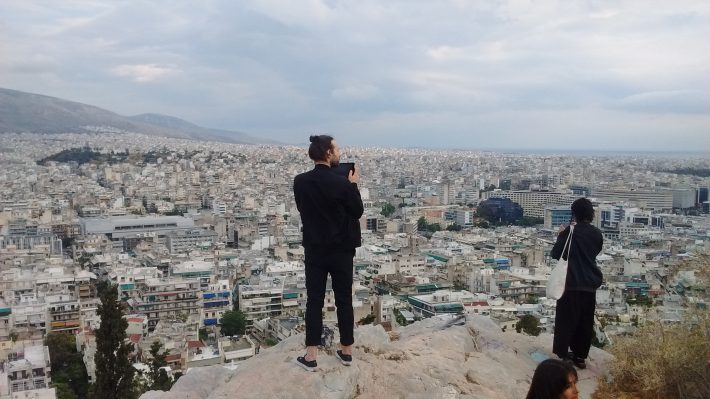From the 15th to the 22nd of May the Experimental Film Class went to Athens to visit the 14th version of Documenta and to understand more the topics of translocation and specific place discussed previously in Berlin. During the week, the already dislocative nature of Adam Szymczyk’s proposal made us transit across the city looking for the decentralized venues where several events were taking place. From the Benaki Museum, the Athens School of Arts, EMST and the Odeon Athens Conservatory – where most of the pieces were gathered – to the Parko Eleftherias, the Greek Film Archive, the Temple of Olympian Zeus – where more time specific events such as screenings, concerts, talks and performances were shown -, the Documenta 14th offered us a glimpse at an attempt of dialogue between art and a dynamic city.
Example of this pursued dialogue was the dining gathering at Kotzia Square, where Pakistani artist Rasheed Araeen set up a complex of tents to serve food free of charge twice a day for the first hundred people that showed up, hoping to bring together on an eating activity the international visitors of the art world and regular Atheneans. The sometimes intentionally obscure logic behind the disposition of the pieces around the city, the selection of the artists and the lack of written text pushed us as spectators to draw other sorts of intellectual connections between the pieces and their surroundings. A good example of this was the Conservatory, where music and sound was a recurrent place that threaded somehow a sort of coherence among pieces, which varied in their place and time of origin.
Another example of the dialogic nature of our experience was our assistance to a series of lectures that composed part of a workshop on the Athens School of Arts: This allowed us to see some part of the academic context, as guests but at the same time from within, and enabled some of us interested in performance to take part in workshops later on.
The dialogic basis of the exhibition makes it necessary to establish a comparison among the pieces in Athens and the ones that the artists presented in Kassel in order to see if there was a successful conversation among the cities, at least from the perspective of each artist. Another level of comparison than can be thought of lies in the relationship of the documenta with each of the two cities: With Athens, as a sort of intruding event, not very much acknowledged by the locals and with Kassel, of which it constitutes a central part of its identity.
